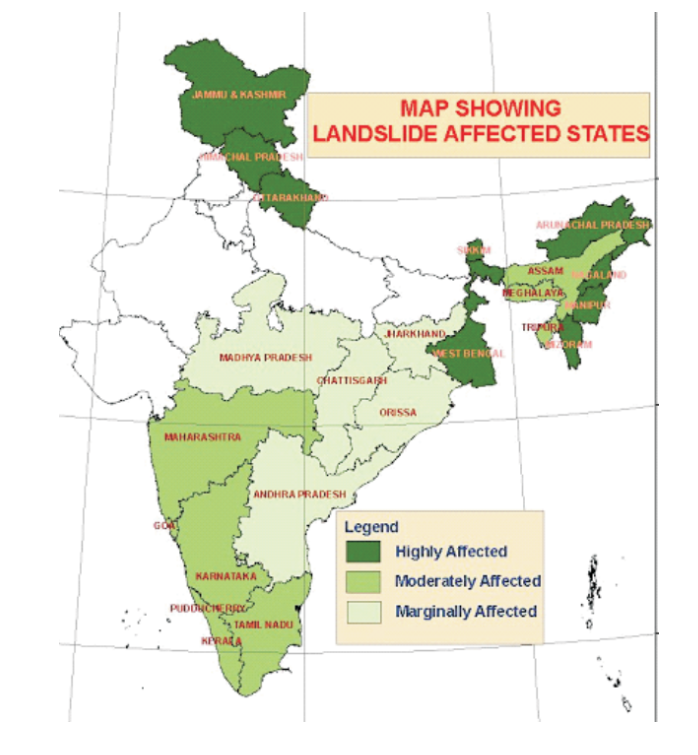8 August 2024 : Indian Express Editorial Analysis
1. Lesson from Wayanad
(Source: Indian Express; Section: The Ideas Page; Page: 11)
| Topic: GS3– Disaster Management |
| Context: |
|
Social Inequality and Historical Context
- This tragedy highlights the stark disparity in Indian society between the privileged and the underprivileged. Notably, Mundakkai is just three kilometers from Puthumala, which experienced a similar disaster in 2019.
- During a visit to the area in heavy rain, the steep slopes dotted with tall buildings and tea plantations were observed. The landslides had covered roads with mud, and a river of mud had traveled down a gorge for a kilometer and a half, burying 55 houses of tea-estate laborers.
- This site was utterly unsuitable for human habitation, and the destruction emphasized the impact of replacing the original natural tree cover with exotics like eucalyptus, contributing to the disaster.
Historical Land Management and Exploitation
- The situation of tea planters and laborers living in the gorges reflects the history of forest and land management in India during British rule. The British aimed to manage and drain the country, often at the expense of local communities.
- Shifting cultivation, which involved clearing tree growth for millet cultivation and allowing the land to regenerate over 15-20 years, was opposed by British tea and coffee estate owners.
- They wanted a steady labor force for their estates, which led to the exploitation of laborers. The British economic interests lay in rendering people resource-less and dedicating forest tracts to tea and coffee plantations.
Ecological Concerns and WGEEP Recommendations
- The Western Ghats Ecology Expert Panel (WGEEP) considered this historical background in their assessment of India’s ecological state. Their report emphasized the importance of four capital stocks: natural, social, human, and man-made.
- India’s focus on subsidized man-made capital at the expense of natural, human, and social capitals has worsened disparities and decreased overall social welfare.
- This has led to increasing human interventions in ecologically sensitive regions, such as mines, quarries, roads, and buildings on hill slopes.
The Need for Sustainable Development
- To mitigate these adverse trends, WGEEP recommended carefully drafted guidelines for regulating and promoting developmental activities based on ecological sensitivity zones: high, moderate, and low.
- These guidelines were intended to initiate a democratic decision-making process beginning with local governing bodies like gram sabhas and mohalla sabhas.
- However, the government has largely ignored these proposals, showing little interest in protecting nature or empowering people.
Call to Action
- The 13-year delay in implementing the WGEEP’s suggestions has resulted in worsening conditions, with increasing frequency and intensity of floods and landslides.
- Studies in the Maharashtra Western Ghats show a 100-fold increase in landslides from 2011 to 2020, correlating with human interventions. It is crucial to take stringent actions to protect nature and empower decentralized democratic institutions.
- Kerala, with its high literacy rate and tradition of empowering people, exemplified by the People’s Planning Campaign of 1995-96, should revive the spirit of the WGEEP to turn the tide.
| Major Landslide-Prone Areas in India |
|
|
| PYQ: Disaster preparedness is the first step in any disaster management process. Explain how hazard zonation mapping will help in disaster mitigation in the case of landslides. (250 words/15m) (UPSC CSE (M) GS-3 2019) |
| Practice Question: Discuss the implications of the recent landslides in Kerala’s Wayanad district. How do the recommendations of the Western Ghats Ecology Expert Panel (WGEEP) address these issues, and what steps should be taken to implement sustainable development practices in ecologically sensitive regions? (250 words/15 m) |
2. A crime against women
(Source: Indian Express; Section: The Ideas Page; Page: 11)
| Topic: GS2– Social Justice |
| Context: |
|
The Prevalence and Perception of Witchcraft
- When asked about witches, a young man recognized them primarily through popular culture, like Harry Potter and films featuring witchcraft. The Salem witch trials and fictional portrayals of witches, such as in “The Wizard of Oz,” shape this perception.
- However, knowledge of Birubala Rabha, a prominent anti-witch-hunting activist who passed away in 2024 and was awarded the Padma Shri in 2021, was absent.
- This gap highlights the diverse slices of Indian society and the varying awareness of such social issues.
Global and Indian Context of Witch-Hunting
- In July 2021, the UN Human Rights Council adopted a resolution to eliminate harmful practices related to witchcraft accusations and ritual attacks (HPAWR).
- Data from 60 countries between 2009 and 2019 documented 20,000 cases, though many go unreported. While HPAWR is often perceived as an African problem, it exists globally, including in the USA, Europe, and India.
- In India, the National Crime Records Bureau (NCRB) recorded 85 murders related to witchcraft in 2022, mainly in Chhattisgarh, Madhya Pradesh, Jharkhand, and Odisha. These figures, while declining, still indicate about 100 such murders annually.
Gender and Witchcraft Accusations
- The term “witch” is gender-neutral, though commonly perceived as female.
- Accusations frequently target widowed or single women, with motives ranging from property disputes to societal ignorance.
- Mental health issues and local diseases also contribute to branding individuals as witches.
Addressing Witch-Hunting Practices
- Films like “Kala Sach,” based on true stories, depict the severity of witch-hunting practices.
- Solutions include spreading education and awareness, and initiatives like Jharkhand’s “Project Garima” and Assam’s “Project Prahari” aimed at restoring dignity and community policing, respectively.
- However, the question remains whether a developing country like India should do more or hope the problem dissipates over time.
Legislative Measures and Effectiveness
- India’s Constitution, IPC, and Protection of Human Rights legislation address witch-hunting, with specific state laws enacted to combat the issue.
- These include Bihar’s Prevention of Witch (Daain) Practices Act (1993), Jharkhand’s Prevention of Witch (Daain) Practices Act (2001), and similar laws in other states.
- However, these laws face challenges like low prosecution and conviction rates and unclear legislative intent.
- For instance, Odisha’s law penalizes both witch-hunting and the practice of witchcraft, blurring the lines between protecting individuals and criminalizing practices.
Need for Clear Distinction and Effective Reporting
- A more effective approach would be to clearly distinguish between the practice of witchcraft and witch-hunting. The NCRB should refine its reporting to categorize these separately, not just as murders with witchcraft motives.
- The IPC (and its replacement) should include specific sections for both crimes. Legislation needs to be supported by police reforms and an efficient criminal justice system.
- While metro India may be unaware of this rural issue, it is a significant concern that India, along with Nepal, is the only South Asian country highlighted in UN documentation for HPAWR, indicating a need for more comprehensive reporting and action.
| Practice Question: Examine the issue of witch-hunting in India. Discuss the effectiveness of existing legal measures and initiatives aimed at combating this practice. What further steps can be taken to ensure the protection of vulnerable individuals and the eradication of witch-hunting from Indian society? (250 words/15 m) |




